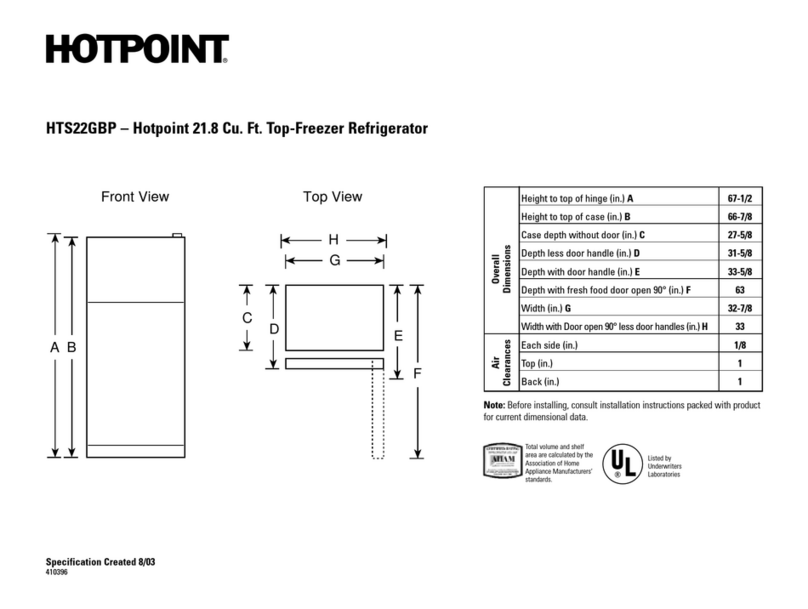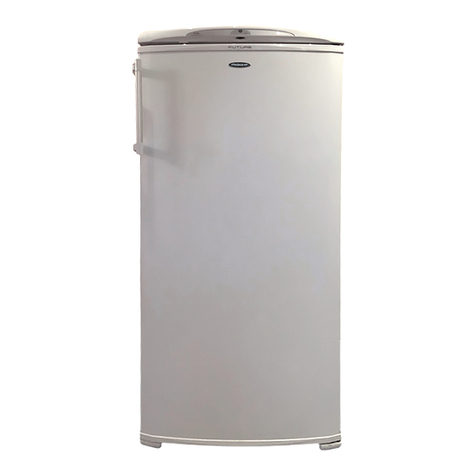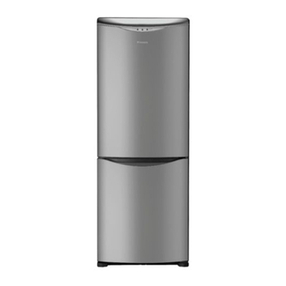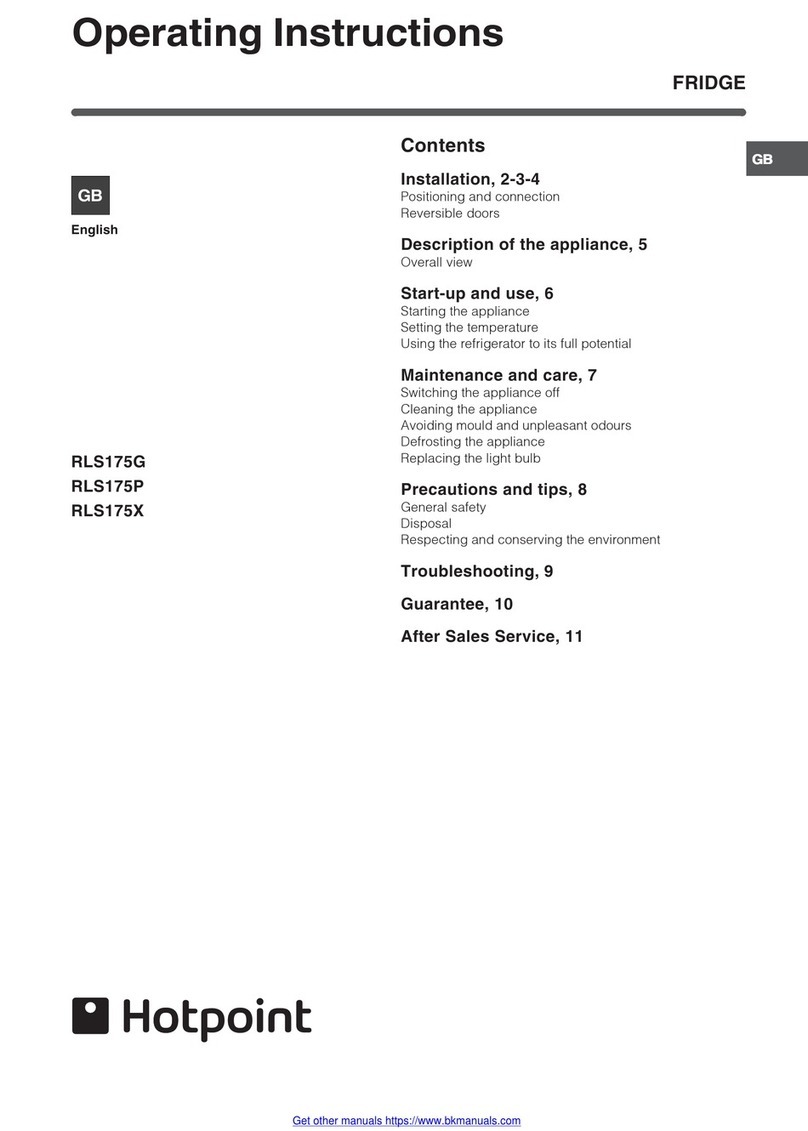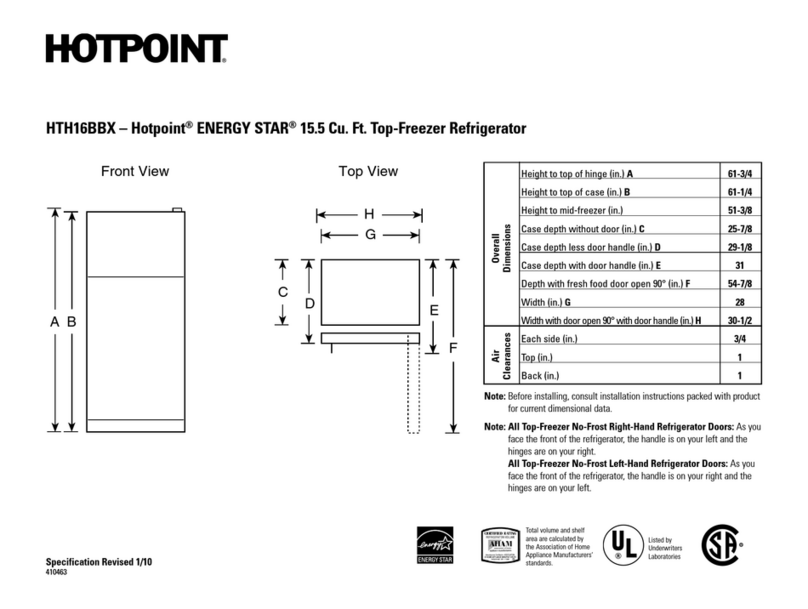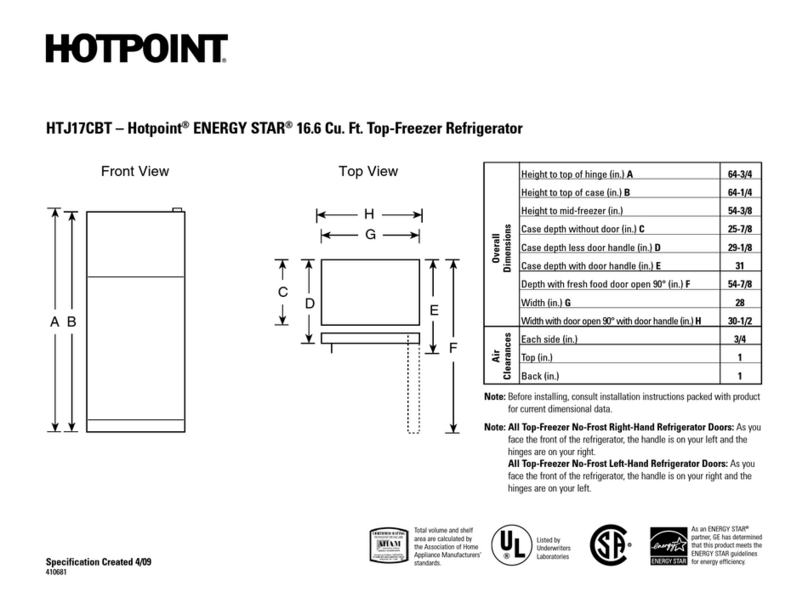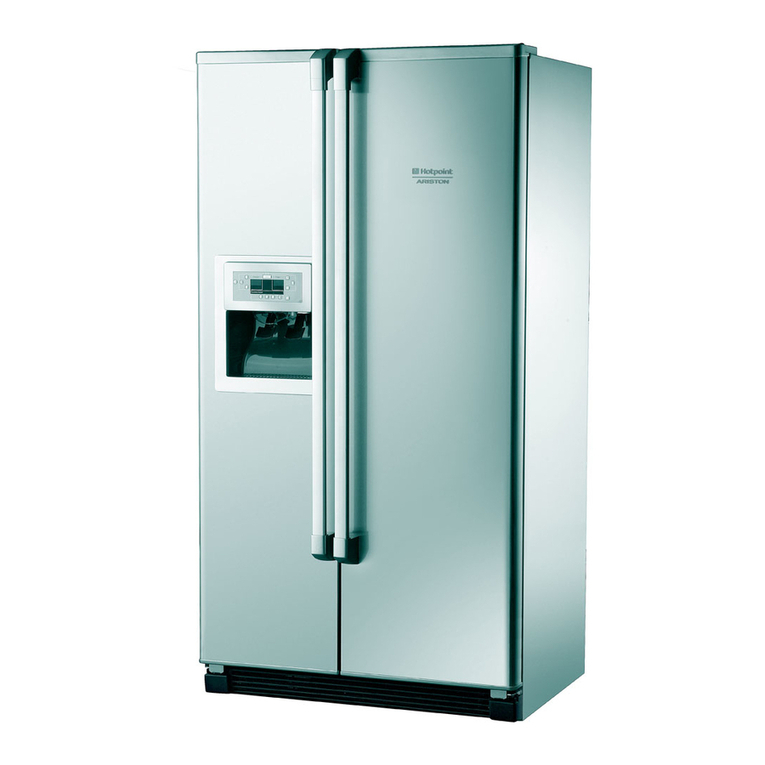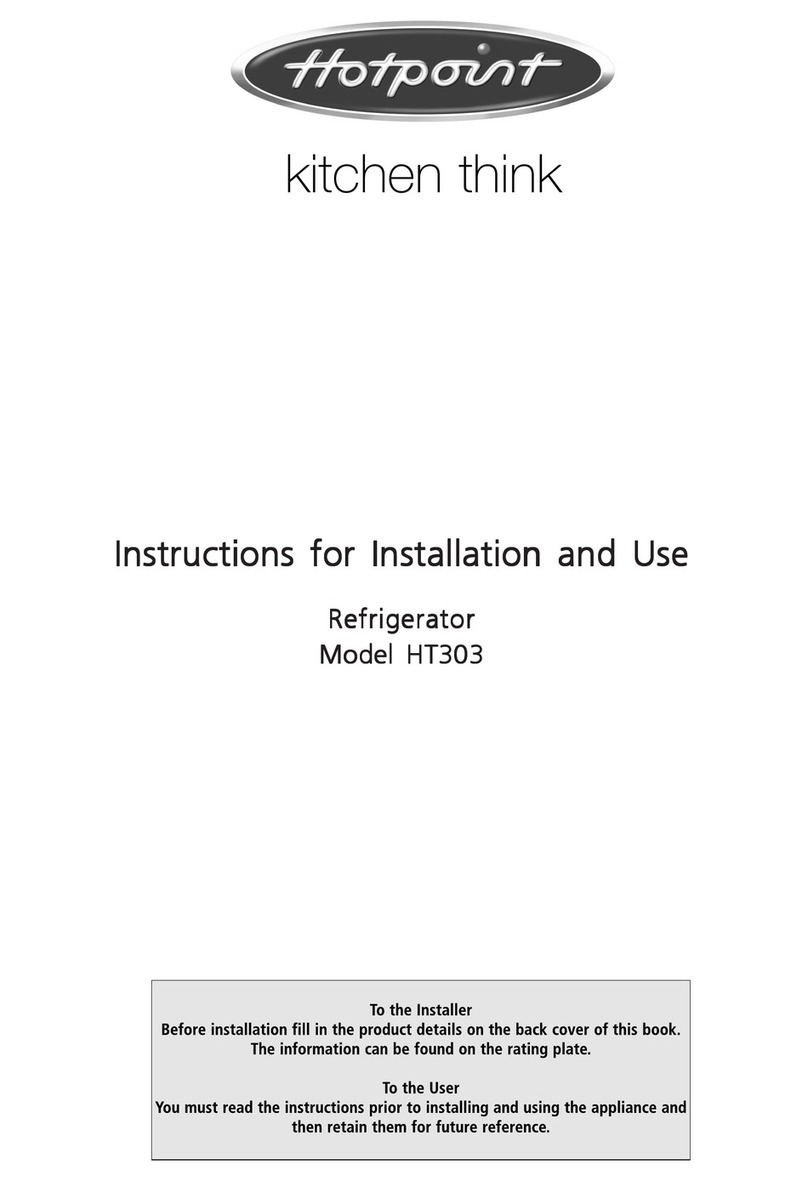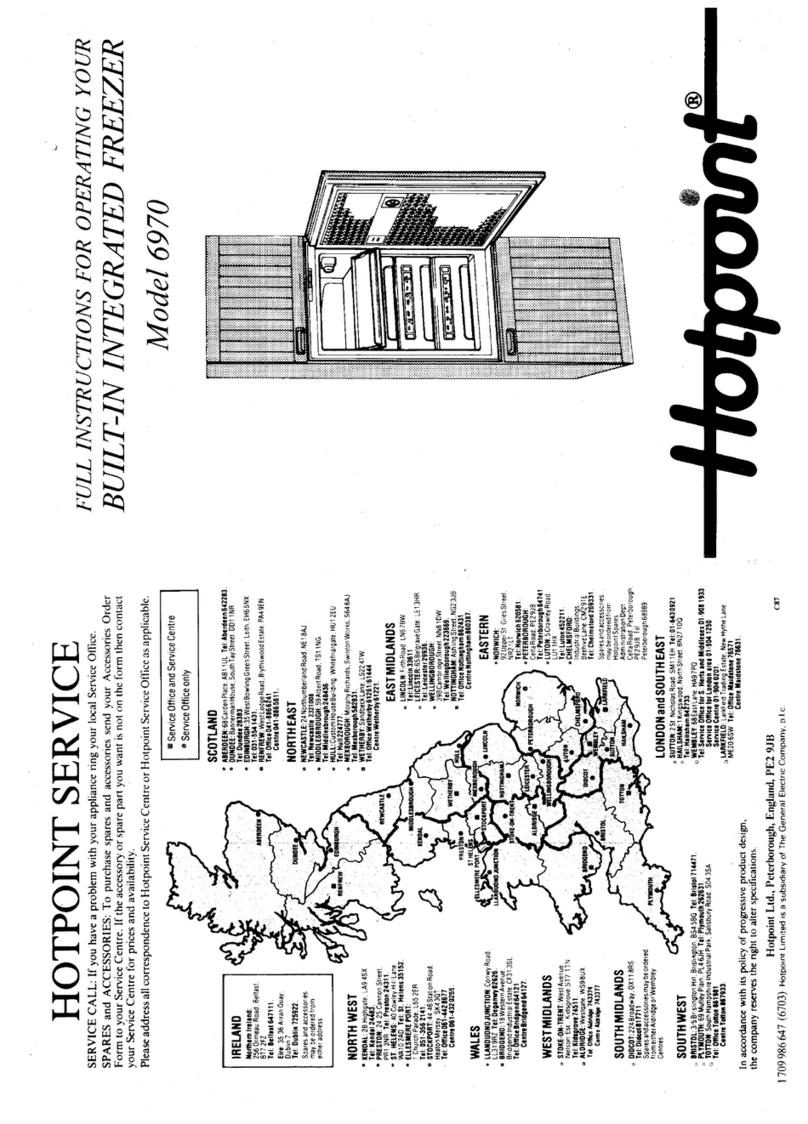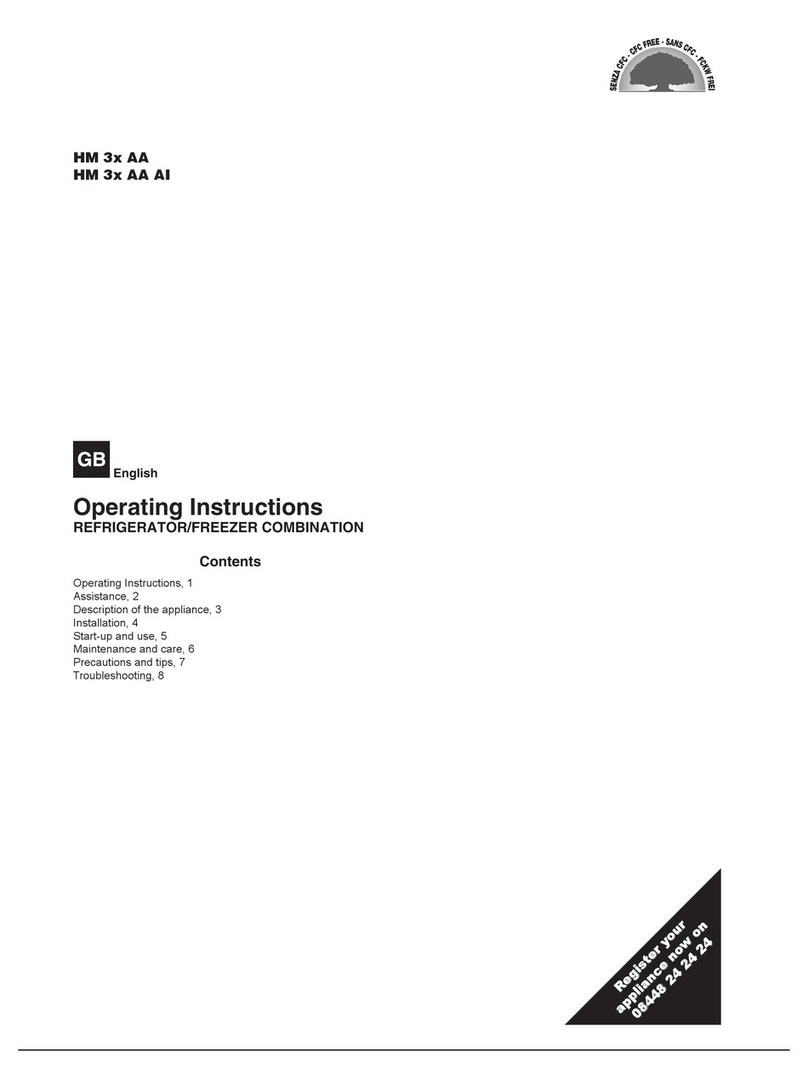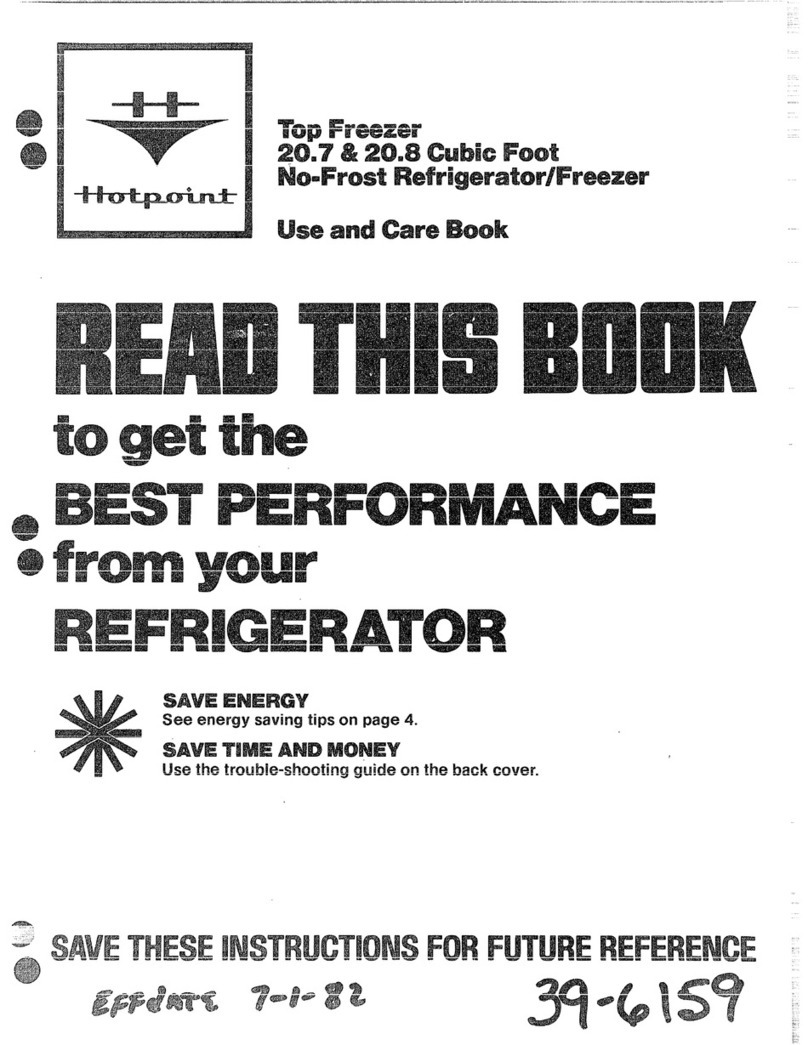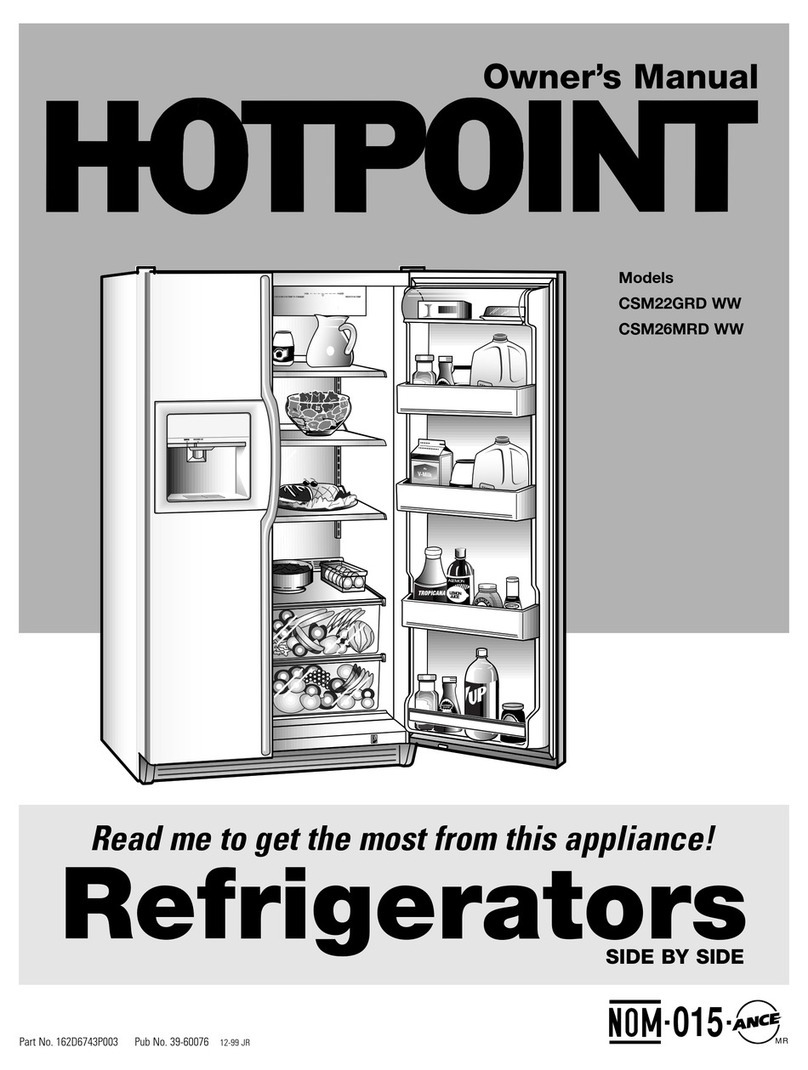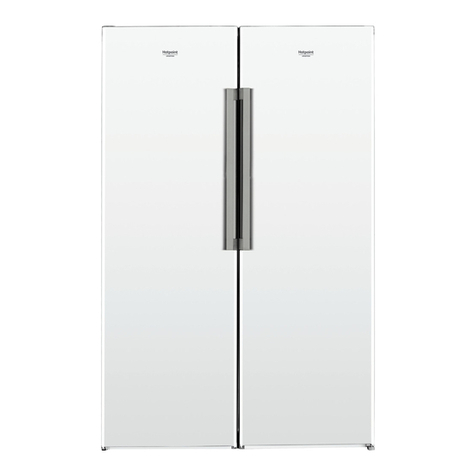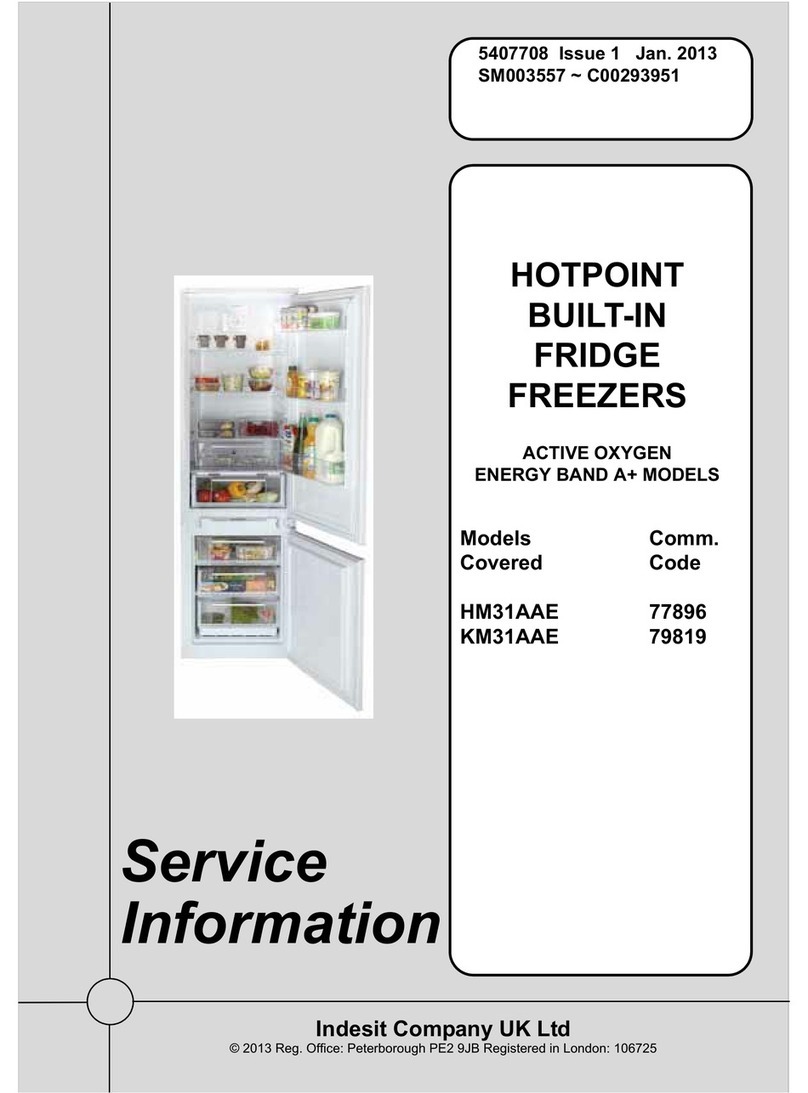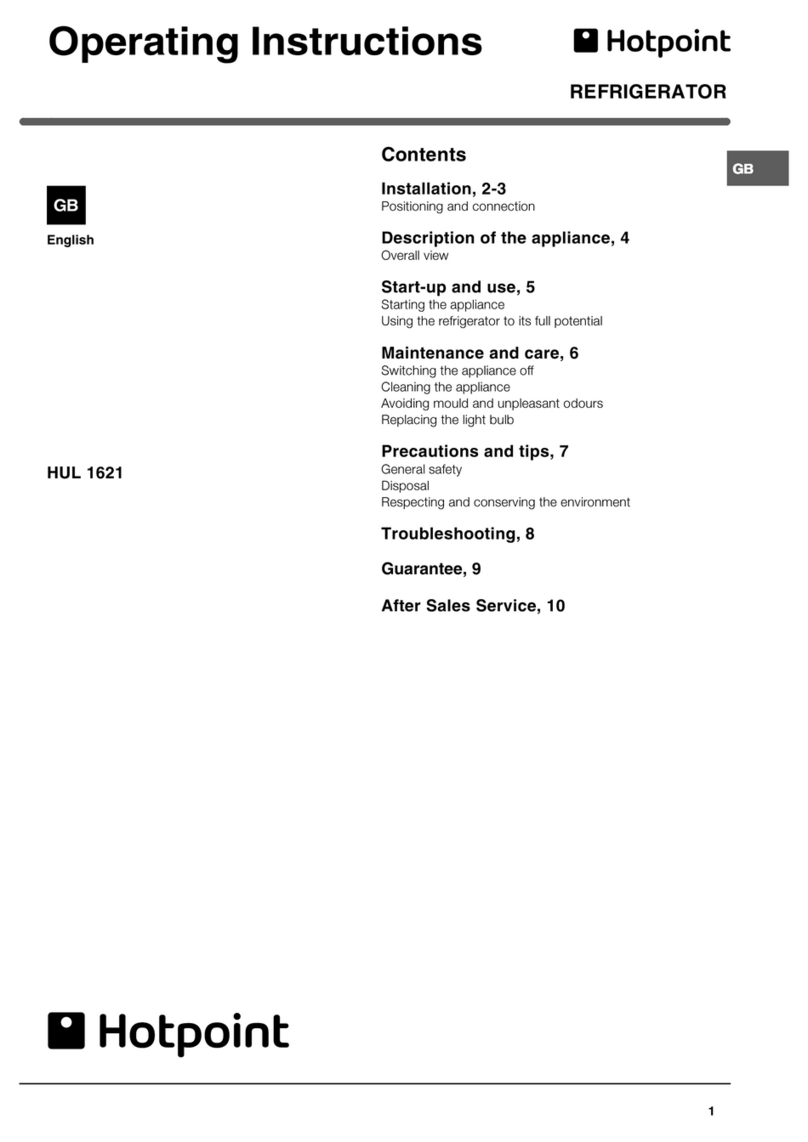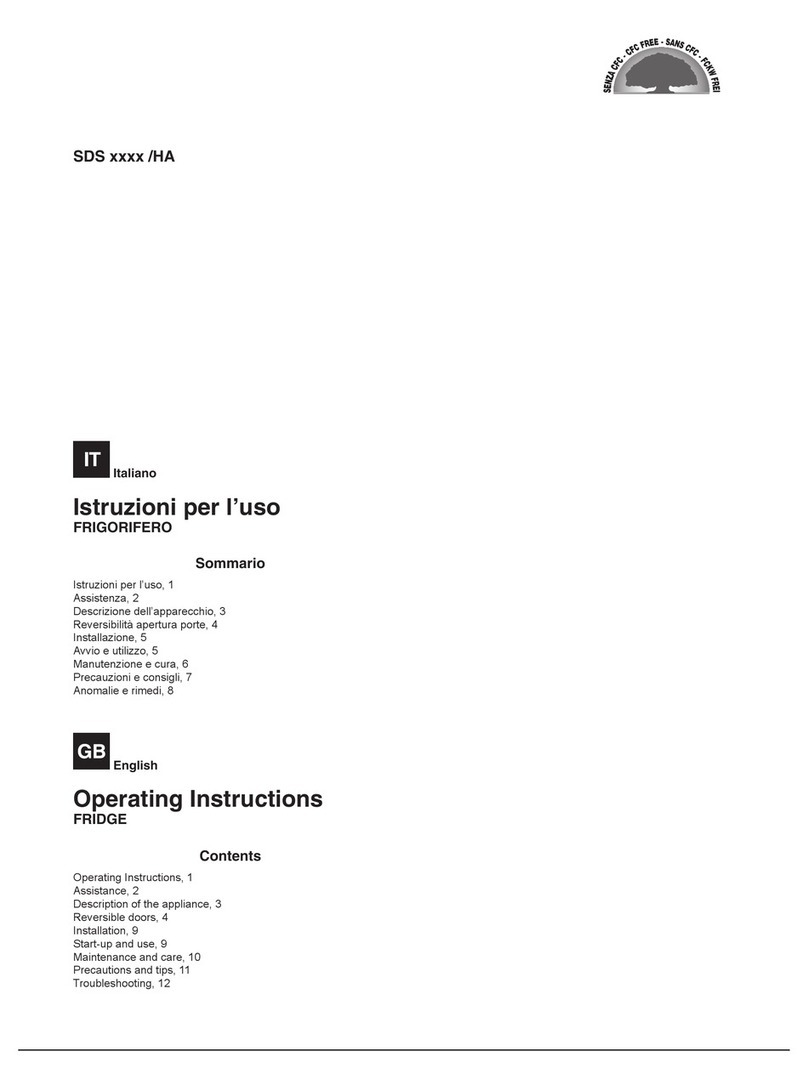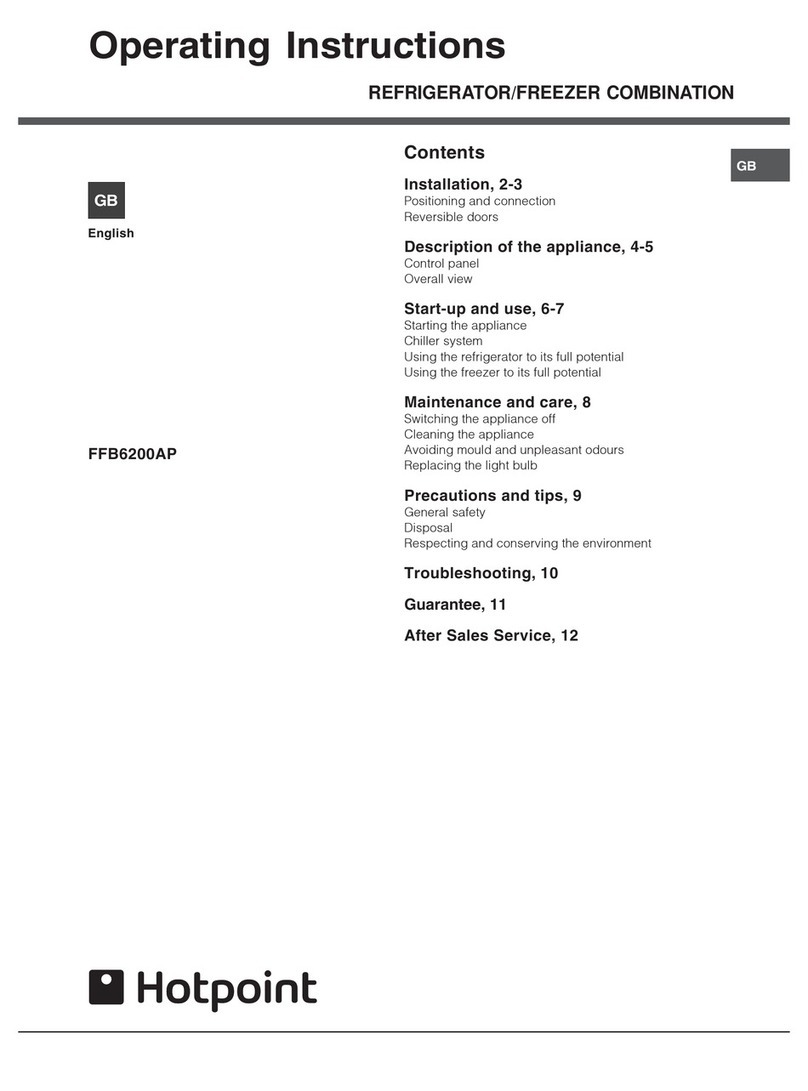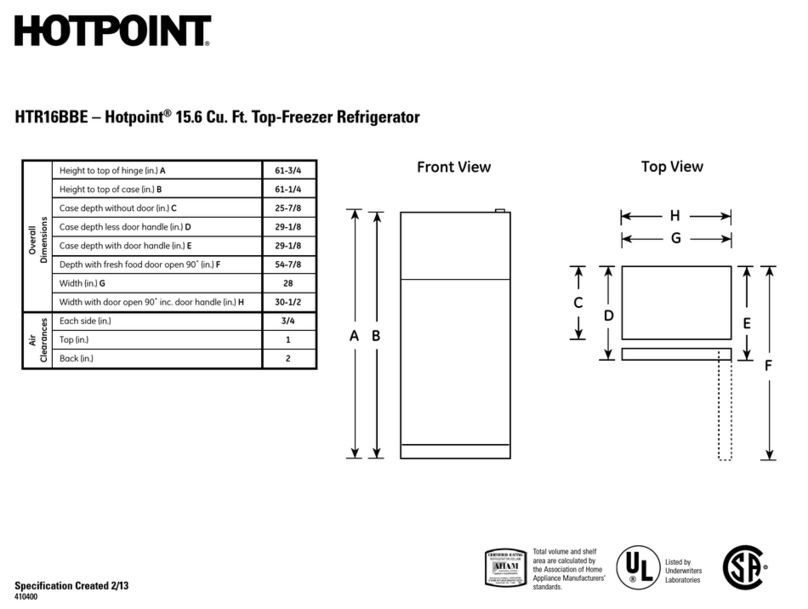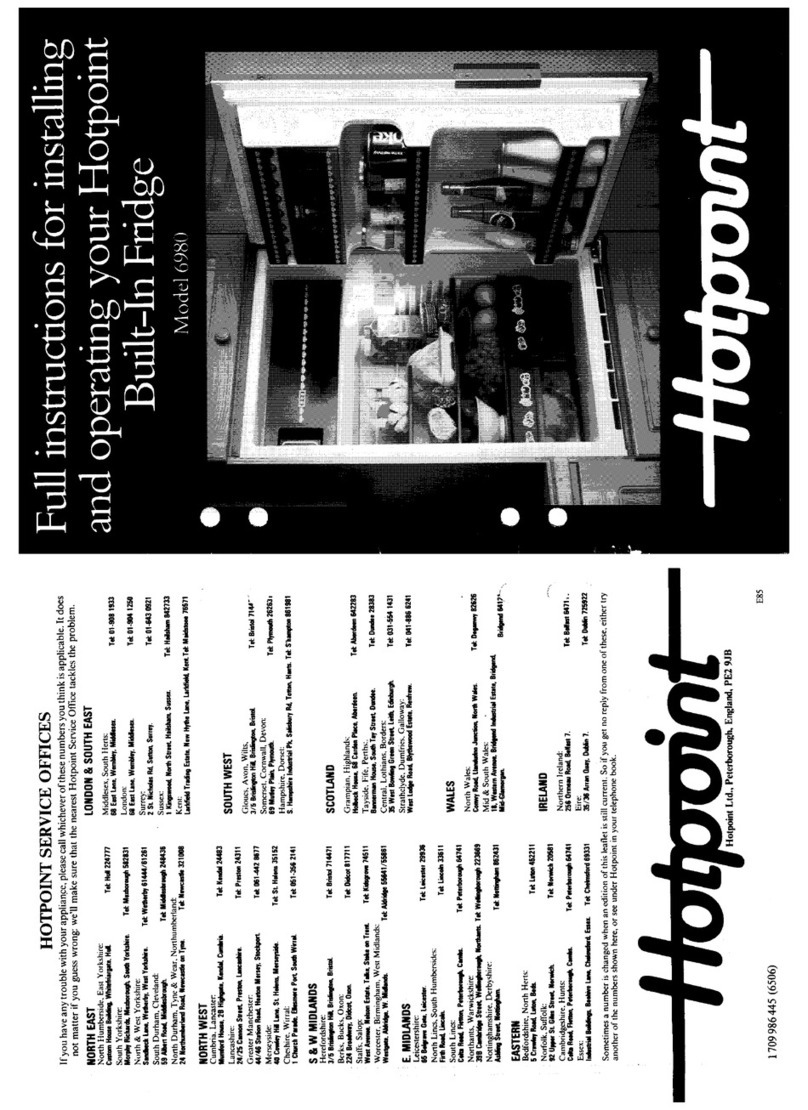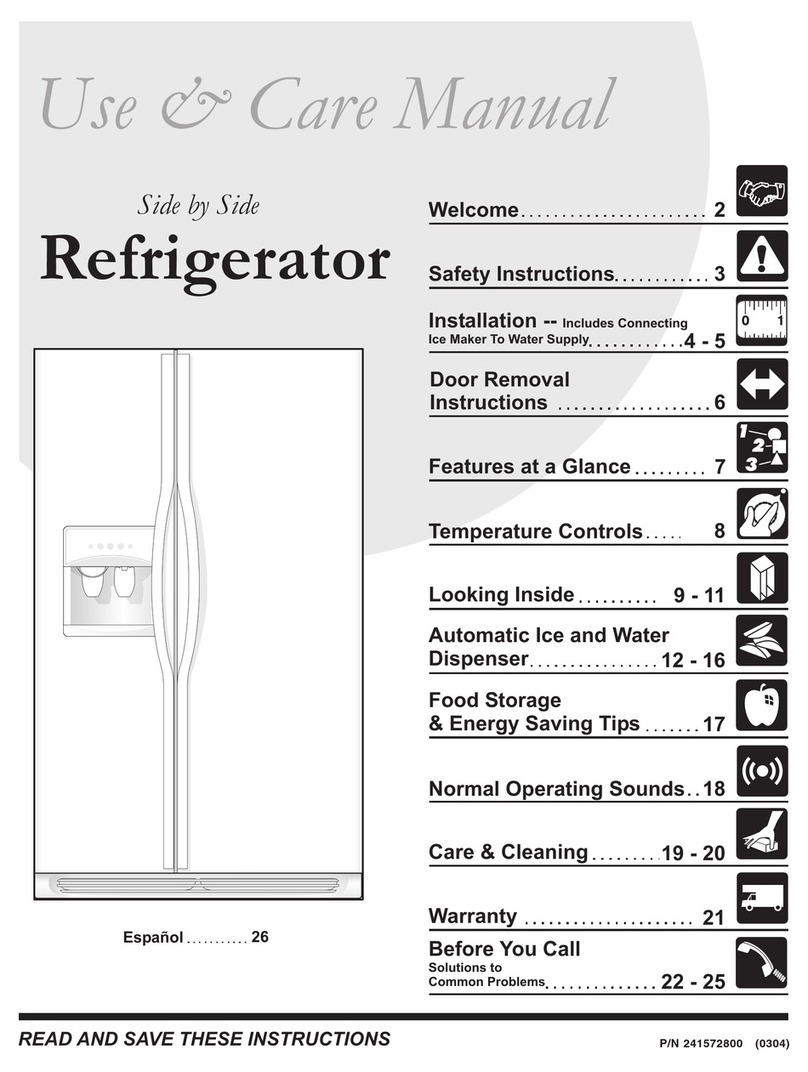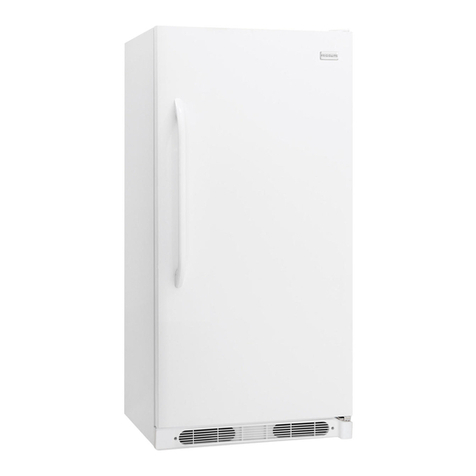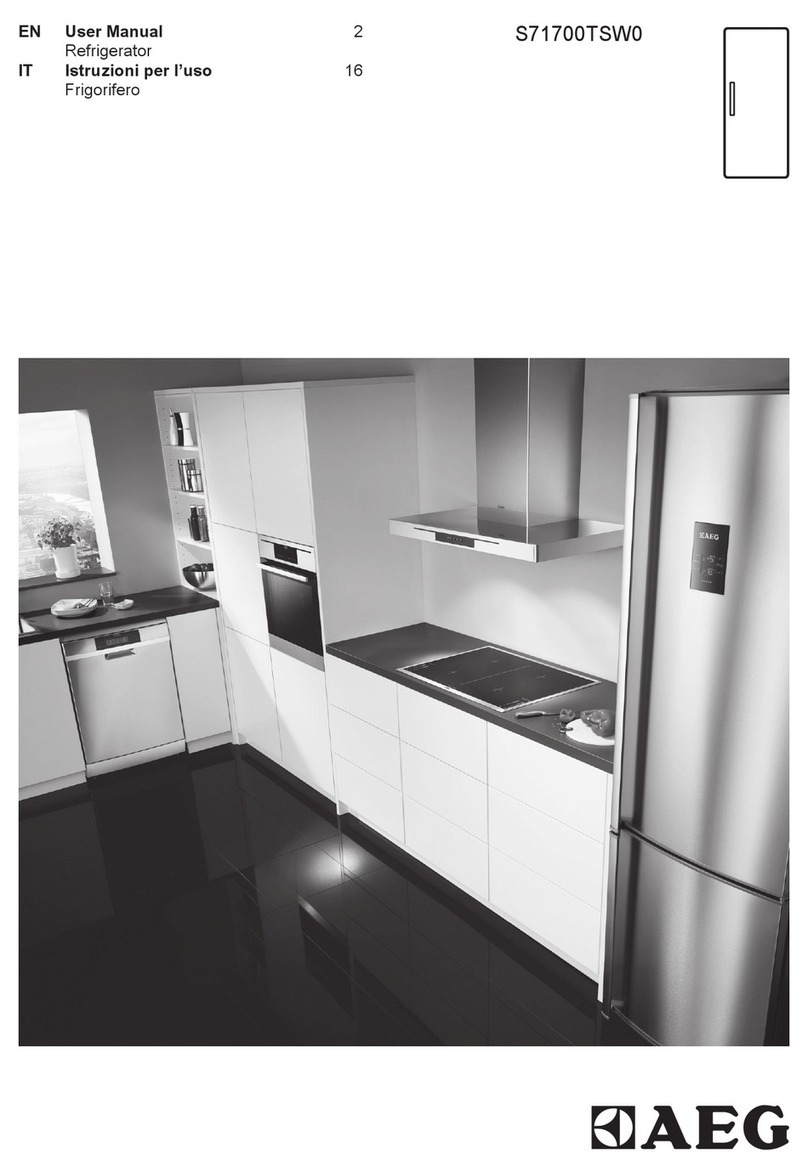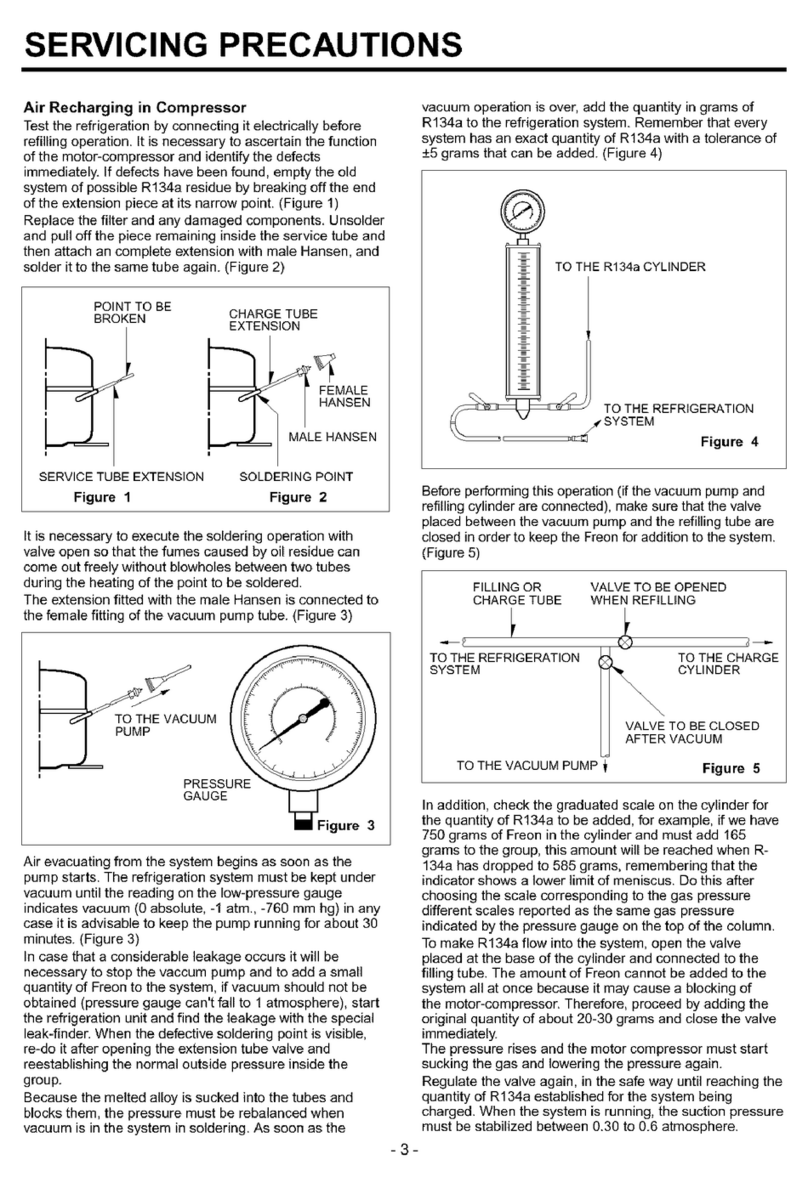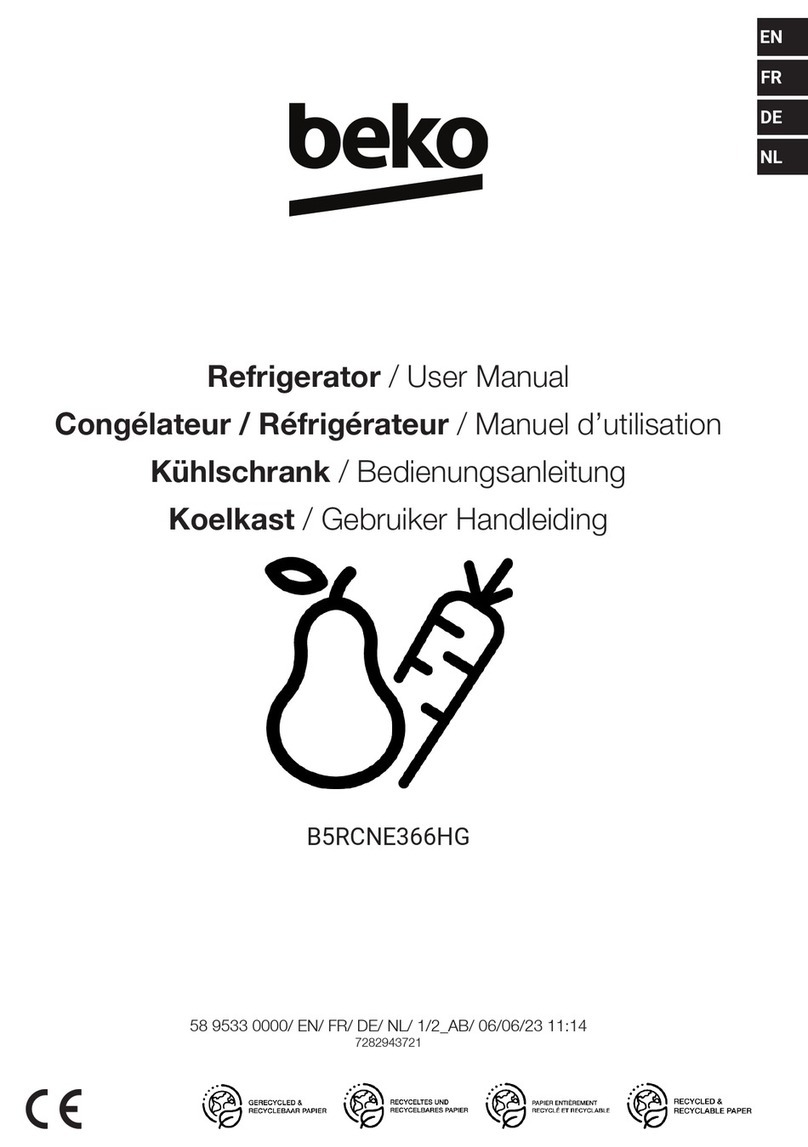Eatingquality drops R~HliGH?fiTORFRH#~R
after time shown 35° :T400F.
FreshMeats DAYS
Roasts(Beef and Lamb). .3to 5
Roasts(Pork and Veal) 3to 5
Steaks (Beef) ....... 3t05
Chops (Lamb) . . . . . . . . ..3t05
Chops (Pork) ........... 3t05
Ground and Stew Meats 1to 2
Variety Meats........ lto2
Sausage(Pork) . . . . . . . . . . lto2
ProcessedMeats
Bacon................7
Frankfurters ............ 7
Ham(Whole) ...........7
Ham(Half) .............3to5
Ham(Slices).......,.,., 3
Luncheon Meats. . . . . . . . . 3t05
Sausage(Smoked). . . 7
Sausage
(Dry and Semi-Dry). 14to 21
CookedMeats
Cooked Meatsand
Meat Dishes . . . 3t04
Gravy and Meat Broth. ... 1to 2
FreshPoultry
Chicken and Turkey
(Whole) ............lfo2
Chicken (Pieces) . . . . . 1to 2
T!!rkey(pieces) . . . . . . . . . . lto2
Duck and Goose (Whole). 1to 2
Giblets . . . . . . . . ..lto2
CookwtPoultry
Pieces
(Covered with Broth), ., 1to 2
Pieces (Not Covered).. . 3to4
Cooked Poultry Dishes. . . 3to 4
Fried Chicken . . . 3t04
fjoF,
MONTliS
6to 12
4t08
6to12
6t09
3t04
3t04
3t04
lto2
1
%
lto2
lto2
lto2
Freezing
not
recom-
mended.
2t03
2t03
12
9
;
3
6
1
4t06
4
(Otherthanformeats&poultry) FREEZER
Most fruits and vegetables. . . . 8-12 months
Lean fish . . . . . . . . . . . . .6-8 months
Fatty fish, rolls and breads,
soups, stew, casseroles. . . . . . ...2-3 months
Cakes, pies, sandwiches,
Ieft-overs (cooked),
Ice cream (original carton) ....1 month max.
New techniques are constantly
being developed. Consult the
College or County Extension
Service or your local Utility
Company for the latest information
on freezing and storing foods.
‘~.S. Department of Agriculture
-k) Shx%? Lmfrmml meats, fish and
poultry- Nleats, fish and poultty
purchased from the store vary in
quality and age; consequently,
safe storage time in your refrig-
erator will valry
@Always remove store wrappings.
@Rewrap in foil, film or wax paper
and refrigerate immediately.
Tostore cheese,wrapwelIwith wax
paperor aluminum foil, or put in a
plastic bag,
~Carefully wrapto expel air and
help prevent mold.
@Store pre-packagedcheese in its
own wrapping if you wish.
Tostorevegetables–Vegetable
drawers have beenspecially cte-
signed to preserve naturalmoisture
and freshness of produce.
@Crispnesscan be maintained by
covering vegetables with amoist
towel.
@As afurther aid to freshness,
pre-packaged vegetables can be
stored in their original wrapping.
T’ storeicecream–Fine-quality
ice cream, with high cream
content, will normally require
slightly lower temperatures than
more “ai[y” already-packaged
brands with low cream content.
@It will be necessaryto experiment
to determine the location in the
freezer compartment and the tem-
perature control setting to keep
your favorite ice cream atthe right
serving temperature.
@Also, the rear of the freezer
compartment isslightly colder than
the front.
Ti&ls on ‘@%%Zingfclods
There are three essential require-
ments for efficient home freezing.
~. Initialquality. Freeze only
top-quality foods. Freezing retains
quality and flavor; it cannot improve
quality.
2. Speed. The quicker fruits and
vegetables are frozen after picking,
the better the frozen product will
be. You’ll save time, too, because
less culling and sorting will be
necessary.
3. Prqwsr packaging. Use food
wraps designed especially for
freezing; they’re readily available
in awide selection at your favorite
store. 4
Tofreeze meat,fishandpoultry,
wrapwell in freezer-weight foil (or
other heavy-dutywrapping material)
forming it carefully to the shapeof
the coi?tents,This expels air. Fold
andcrimp endsof the packageto
provide agood, lasting seal.
Don’t refreeze meatthat hascomp-
letely thawed; meat,whether raw
or cooked, can be frozen success-
fully only once
Limit freezing of fresh (unfrozen)
meatsor seafoodsto 15pounds
at atime.
*Store all like things together. This
not only savestime, butelectricity—
becauseyou can find foods faster.
@Place the oldest items up front so
they can be used up promptly.
@Usethe handysheivesonthe door
for mostfrequently usedsaucesand
condiments.
arid ixxld Cxxts.
@Place most perishable items such
as milk, cream or cottage cheese
toward the rear of the top shelf as
they will stay coldest in this part
of the fresh food compartment.
~Cover moist foods with tight lids,
plastic film or foil.
~Leaf vegetables and fruits placed
in storage drawers will last longer
when stored in closed plastic con-
tainers or wrapped in plastic film.
@Do not overload your fresh food
or freezer compartment with alot
of warm food at once.
@Open the door the fewest times
possible to save electrical energy.
@When going out of town for
several days, leave asfew perish-
ables aspossible in the refrigerator.
Move the icemaker manual switch
to “OFF” and shut off water to the
refrigerator. ,.<.>
.- “1
